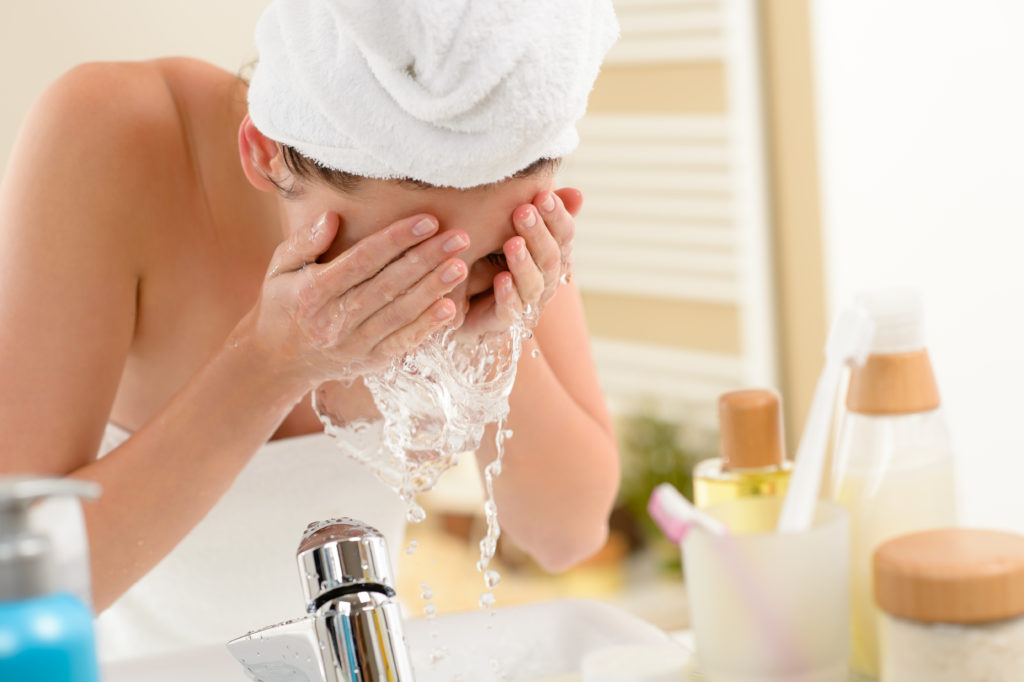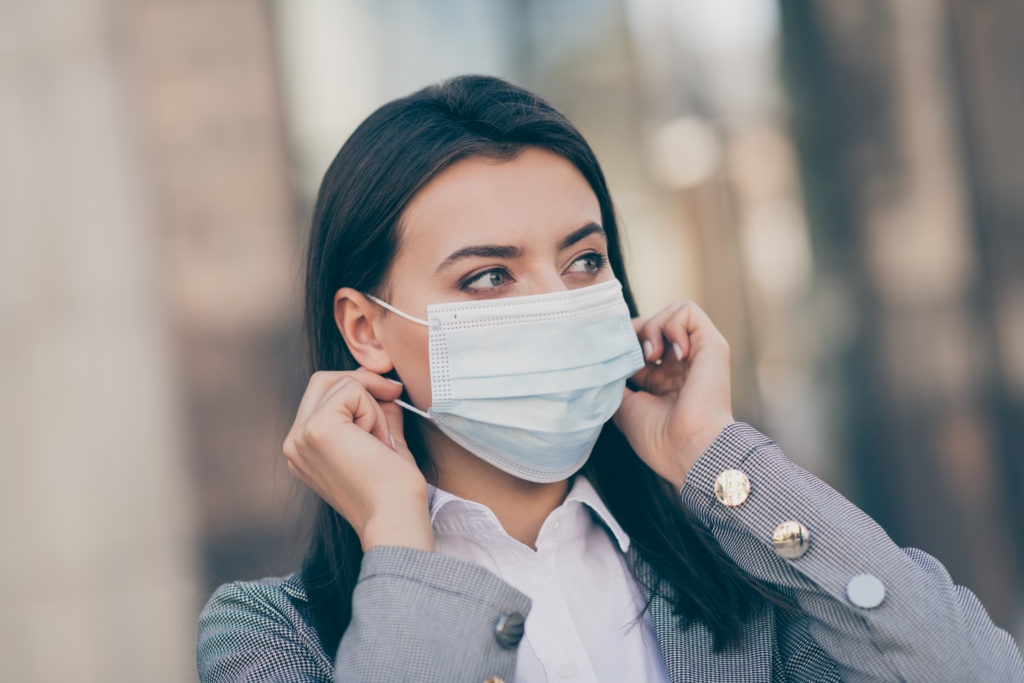We have been dealing with a lot these last two years with Covid-19. Wearing masks has become the new normal and most of us have noticed it’s not good for our skin. Consequently, we have to wear them to keep out mouth and nose covered to prevent Covid-19. However, there are ways to keep your skin from breaking out and still looking clear.
Wash your face more often

Now that we have this pandemic, our lives have completely changed. As well as your skin routine. You will want to wash your face more often than usual. This includes:
- Once in the morning before putting on your mask
- Once at night before bed
- After sweating or wearing your mask
Remember, when you wash your face, use lukewarm water. Pat your skin dry with a clean towel to avoid scrubbing your skin as it can cause irritation. Keeping your face clean before you put your mask on and after taking it off will help keep your skin clean.
Use a moisturizer
Dry skin is a common problem when wearing a face mask. Using a moisturizer can reduce dryness by adding a protective barrier. Choose a moisturizer that is fragrance and oil free. You should also use a moisturizer with one of the following ingredients:
- Ceramides
- Hyaluronic acid
- Dimethicone (which can also create a barrier that helps reduce irritated skin)
Ceramides are a class of fatty acids and are naturally found in skin cells. They help create a barrier and locks in moisture to help prevent dryness and irritation. Ceramides can help protect form environmental damage and have anti-aging effects.
Hyaluronic acid is a clear substance that is naturally produced by your body. This can also help with moisturizing skin, decreases wrinkles, enhance skin firmness and elasticity, as well as repair and regenerate skin.
Dimethicone is a silicone-based ingredient used in many skin care products. It is used in primers, foundations, moisturizers, and other skin products. It helps retain moisture and fills in lines and wrinkles so your makeup looks even.
What moisturizer should you use?
We all have different types of skin and that’s why there’s so many forms of moisturizers too. Depending on your skin type will determine which moisturizer you should look for. If you have oily skin, a gel moisturizer will be perfect. You can find a gel moisturizer in most skin care products like, CeraVe, Neutrogena or Aveeno. If you have normal or combination skin, a lotion is best. If you have dry to very dry skin, cream moisturizers will help keep your skin from flaking.
Take a break from the makeup
Make up is sometimes a necessity for us. Although, it can make your skin breakout even more now. Makeup can clog pores, cause breakouts and soil your mask fabric. Taking a break from makeup will help keep your skin clear.
Take care of your mask

Another key way to prevent maskne is to take care of your mask. Wash your fabric masks after every use, never reuse without washing. Fabric masks still collect dead skin, dirt and oils plus bacteria. Keep a rotation of masks on hand to help when cleaning them. If you wear disposable masks, toss them after their first use. They can still collect dirt and oils from your face. Since you can’t wash these, just throw them away. You should also remove your mask from your face every 4 hours for at least 15 minutes. This should give your face time to breathe.
Wearing the right mask reduces skin problems. A snug and comfortable fit helps not only with protecting you from the virus and other diseases, but also your skin. If your mask feels too tight or moves around your face, it can irritate the skin. Thus, you are also touching your face more often because you’re adjusting your mask. Fabric is also important to avoiding irritation and breakouts. Avoid masks that are made of synthetic fabrics, such as nylon, polyester and rayon. The best mask fabric is 100% cotton. Cotton filters better than synthetic and lets your skin breathe through it.
How to treat individual types of skin
Dryness: this can be the first sign of mask irritation. To assist with dryness, consistently apply moisturizer before wearing the mask and before bed.
Acne: if you have acne under your mask, spot treat it with tea tree oil. Tea tree oil is known for its ability to fight bacteria and reduce skin inflammation. Moisturize with aloe vera, which can also fight bacteria and inflammation. You can also try using zinc supplements, as they can significantly reduce pimples. If you are still having issues, we would recommend seeing a dermatologist.
Redness/swelling: if you have redness or swelling after wearing your mask, icing your skin may help. Using ice cubes in a bag or frozen veggies will work as well. You can then use a small amount of hydrocortisone 1% cream only as needed. Don’t use your mask after applying the cream as it can trap it in and make it stronger, which in terms causes breakouts.
Overall, keep your face clean by washing it in the morning before putting on your mask, at night before bed and after use of your mask. Keep your 100% cotton masks clean by washing them after each use, use a rotation. Avoid using makeup and make sure your skin care routine is the right one for your skin type.
